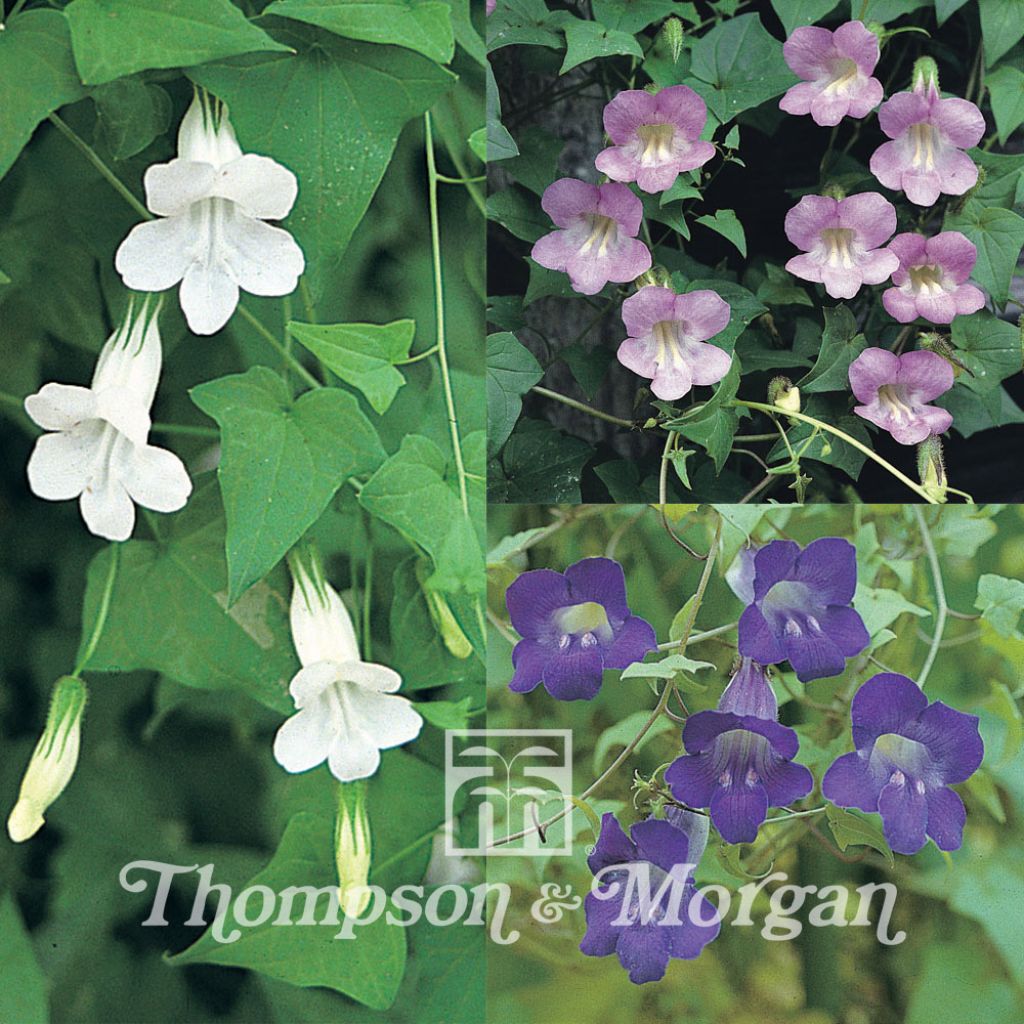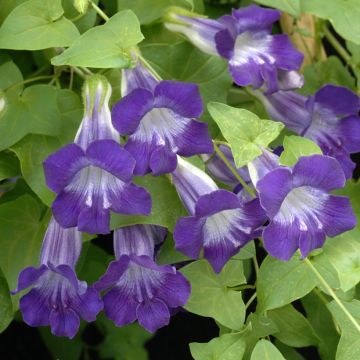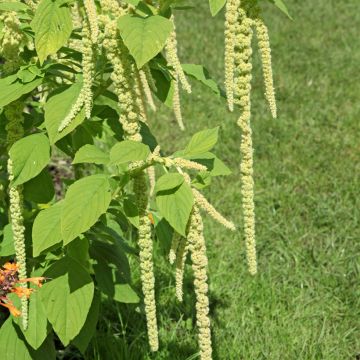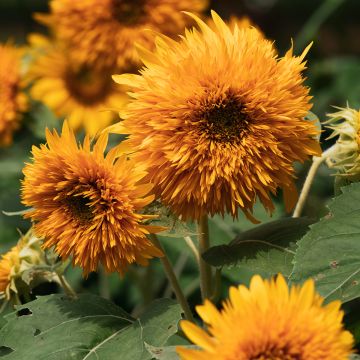

Asarina scandens Jewel Mixed Seeds - Climbing Snapdragon
Asarina scandens Jewel Mixed Seeds - Climbing Snapdragon
Asarina scandens Jewel Mixed
Climbing Snapdragon Vine, Violet Twining Snapdragon
Well informed on the phone. Unexpected, no delivery charges.
Jeannette L., 30/04/2020
Special offer!
Receive a €20 voucher for any order over €90 (excluding delivery costs, credit notes, and plastic-free options)!
1- Add your favorite plants to your cart.
2- Once you have reached €90, confirm your order (you can even choose the delivery date!).
3- As soon as your order is shipped, you will receive an email containing your voucher code, valid for 3 months (90 days).
Your voucher is unique and can only be used once, for any order with a minimum value of €20, excluding delivery costs.
Can be combined with other current offers, non-divisible and non-refundable.
Home or relay delivery (depending on size and destination)
Schedule delivery date,
and select date in basket
This plant carries a 6 months recovery warranty
More information
We guarantee the quality of our plants for a full growing cycle, and will replace at our expense any plant that fails to recover under normal climatic and planting conditions.
Would this plant suit my garden?
Set up your Plantfit profile →
Description
Asarina scandens 'Jewel Mixed' or Climbing Snapdragon is a tender perennial, often treated as an annual. It forms delicate vining stems, covered with bright green arrowhead-shaped leaves and cascades of blue, purple, pink or white trumpet-shaped blooms. It flowers profusely from mid-summer until the first frosts. Ideal for scrambling up fences or trellises. This heat-loving plant thrives in a sunny location in cool, well-drained soil.
Asarina scandens, sometimes named Maurandya scandens or Climbing snapdragon, is a tuberous climbing perennial native to Central America and Mexico. It belongs to the Plantaginaceae family. 'Jewel Mixed' rapidly grows to 2 to 4 m in height. The vining stems are covered with emerald green, shiny, semi-evergreen leaves shaped like arrowheads. Flowering starts in July and continues until the first frosts. If the plants are kept in a warm place, they will continue to flower during the winter months. The blue, purple, pink or white axillary flowers are trumpet-shaped with 5 tapering lobes. The outside of the corolla is slightly hairy. The flowers give way to seed capsules, each containing several seeds that germinate easily.
Climbing snapdragons are ideal for unheated conservatories. When grown outdoors, they will rapidly scramble up shrubs, small trees or fences in a single season. Similarly to Morning Glory, they can be grown in hanging baskets from which they will tumble down in richly-coloured cascades. Asarina scandens can also be left to roam in rock gardens or over low retaining walls. It is essential to provide the plants with a warm, sunny spot and soil that remains cool and moist. In warmer climates, avoid exposing them to scorching afternoon sunlight.
Asarina seeds are best left to experienced, “seasoned” gardeners as they are extremely small, like fine dust.
Report an error about the product description
Flowering
Foliage
Plant habit
Botanical data
Asarina
scandens
Jewel Mixed
Plantaginaceae
Climbing Snapdragon Vine, Violet Twining Snapdragon
Maurandya scandens
Central America
Other Asarina seeds
View all →Planting and care
Sow from February to mid-April at 20-24°C in good quality sowing mix and cover with a fine layer of compost or vermiculite. Keep the soil moist but not soggy and make sure to give the seeds enough light. Place in a propagator or polyethylene bag until germination (14-21 days).
When the seedlings are well-rooted and strong enough to handle, transplant them into pots or hanging baskets in rich, light soil amended with vermiculite. Keep them out of direct sunlight for 2 weeks in an unheated greenhouse, then harden them off gradually for 10 to 15 days. Finally, when all risk of frost is over, plant them out in a sunny, sheltered location.
Care: Water and feed the plants once a week during the summer. In autumn, bring them indoors in a cool, bright room and keep the soil slightly moist.
Sowing period
Intended location
-
, onOrder confirmed
Reply from on Promesse de fleurs
Similar products
Haven't found what you were looking for?
Hardiness is the lowest winter temperature a plant can endure without suffering serious damage or even dying. However, hardiness is affected by location (a sheltered area, such as a patio), protection (winter cover) and soil type (hardiness is improved by well-drained soil).

Photo Sharing Terms & Conditions
In order to encourage gardeners to interact and share their experiences, Promesse de fleurs offers various media enabling content to be uploaded onto its Site - in particular via the ‘Photo sharing’ module.
The User agrees to refrain from:
- Posting any content that is illegal, prejudicial, insulting, racist, inciteful to hatred, revisionist, contrary to public decency, that infringes on privacy or on the privacy rights of third parties, in particular the publicity rights of persons and goods, intellectual property rights, or the right to privacy.
- Submitting content on behalf of a third party;
- Impersonate the identity of a third party and/or publish any personal information about a third party;
In general, the User undertakes to refrain from any unethical behaviour.
All Content (in particular text, comments, files, images, photos, videos, creative works, etc.), which may be subject to property or intellectual property rights, image or other private rights, shall remain the property of the User, subject to the limited rights granted by the terms of the licence granted by Promesse de fleurs as stated below. Users are at liberty to publish or not to publish such Content on the Site, notably via the ‘Photo Sharing’ facility, and accept that this Content shall be made public and freely accessible, notably on the Internet.
Users further acknowledge, undertake to have ,and guarantee that they hold all necessary rights and permissions to publish such material on the Site, in particular with regard to the legislation in force pertaining to any privacy, property, intellectual property, image, or contractual rights, or rights of any other nature. By publishing such Content on the Site, Users acknowledge accepting full liability as publishers of the Content within the meaning of the law, and grant Promesse de fleurs, free of charge, an inclusive, worldwide licence for the said Content for the entire duration of its publication, including all reproduction, representation, up/downloading, displaying, performing, transmission, and storage rights.
Users also grant permission for their name to be linked to the Content and accept that this link may not always be made available.
By engaging in posting material, Users consent to their Content becoming automatically accessible on the Internet, in particular on other sites and/or blogs and/or web pages of the Promesse de fleurs site, including in particular social pages and the Promesse de fleurs catalogue.
Users may secure the removal of entrusted content free of charge by issuing a simple request via our contact form.
The flowering period indicated on our website applies to countries and regions located in USDA zone 8 (France, the United Kingdom, Ireland, the Netherlands, etc.)
It will vary according to where you live:
- In zones 9 to 10 (Italy, Spain, Greece, etc.), flowering will occur about 2 to 4 weeks earlier.
- In zones 6 to 7 (Germany, Poland, Slovenia, and lower mountainous regions), flowering will be delayed by 2 to 3 weeks.
- In zone 5 (Central Europe, Scandinavia), blooming will be delayed by 3 to 5 weeks.
In temperate climates, pruning of spring-flowering shrubs (forsythia, spireas, etc.) should be done just after flowering.
Pruning of summer-flowering shrubs (Indian Lilac, Perovskia, etc.) can be done in winter or spring.
In cold regions as well as with frost-sensitive plants, avoid pruning too early when severe frosts may still occur.
The planting period indicated on our website applies to countries and regions located in USDA zone 8 (France, United Kingdom, Ireland, Netherlands).
It will vary according to where you live:
- In Mediterranean zones (Marseille, Madrid, Milan, etc.), autumn and winter are the best planting periods.
- In continental zones (Strasbourg, Munich, Vienna, etc.), delay planting by 2 to 3 weeks in spring and bring it forward by 2 to 4 weeks in autumn.
- In mountainous regions (the Alps, Pyrenees, Carpathians, etc.), it is best to plant in late spring (May-June) or late summer (August-September).
The harvesting period indicated on our website applies to countries and regions in USDA zone 8 (France, England, Ireland, the Netherlands).
In colder areas (Scandinavia, Poland, Austria...) fruit and vegetable harvests are likely to be delayed by 3-4 weeks.
In warmer areas (Italy, Spain, Greece, etc.), harvesting will probably take place earlier, depending on weather conditions.
The sowing periods indicated on our website apply to countries and regions within USDA Zone 8 (France, UK, Ireland, Netherlands).
In colder areas (Scandinavia, Poland, Austria...), delay any outdoor sowing by 3-4 weeks, or sow under glass.
In warmer climes (Italy, Spain, Greece, etc.), bring outdoor sowing forward by a few weeks.












































